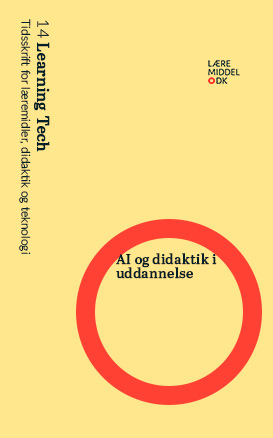dansk
dansk
DOI:
https://doi.org/10.7146/lt.v9i14.137119Abstract
Availability of eye-tracking technology has increased, also for measuring pupils' reading at school. In a school day, eye-tracking data must be able to be translated into measurements that are both reliable and have practical relevance, e.g. for evaluating teaching. This study presents the eye movement measure focus-words designed to mark breakdowns in students' reading fluency and hereby translate eye-tracking data into reading insights. The study is designed to validate the reliability of the measure as an indicator of reading and spelling proficiency and the robustness of the measurement method in practice.
84 pupils from five fourth-grade classes participated, of which data from 68 pupils was included. Together with the students' existing test scores in spelling and reading comprehension, we collected recordings of their eye movements while they read aloud independently.
We find strong correlations between eye movements and reading/spelling test results, which indicates that the measurement method is robust. Further, focus-words correlate with classic eye movement measures, which is a sign of co-validity. Finally, focus-words explain unique variation in students' reading comprehension and spelling proficiency beyond what the most strongly correlated classical measure, fixation time, explains. The results support that focus-word-percentage is a robust metric closely related to literacy.
References
Alexander-Passe, N. (2008). The sources and manifestations of stress amongst school-aged dyslexics, compared with sibling controls. Dyslexia: An International Journal of Research and Practice, 14(4), 291-313. https://doi-org.ez-ucs.
statsbiblioteket.dk/10.1002/dys.351
Andersen, D. (2005). 4 år efter grundskolen – 19-årige om valg og veje i ungdomsuddannelserne. København: AKF-forlaget
Benfatto, M. N., Seimyr, G. Ö., Ygge, J., Pansell, T., Rydberg, A. & Jacobson, C. (2016). Screening for dyslexia using eye tracking during reading. PLoS ONE, 11(12), 1-16. https://doi.org/10.1371/journal.pone.0165508
Bundsgaard, J. & Puck, M. R. (2016). Nationale Test – Danske Lærere Og Skolelederes Brug, Holdninger Og Viden. DPU, Aarhus Universitet.
Børne- og undervisningsministeriet (2019). Dansk Fælles Mål. Lokaliseret d. 12. januar 2023 på https://emu.dk/sites/default/files/2020-09/GSK_F%C3%A6llesM%C3%A5l_Dansk.pdf
Børne- og undervisningsministeriet (2022). Folkeskolens Nationale Færdighedstest. Lokaliseret d. 12. januar 2023 på https://www.uvm.dk/folkeskolen/test-evaluering-og-skoleudvikling/test--og-evalueringsredskaber/folkeskolens-
nationale-faerdighedstest
Caravolas, M., Hulme, C. & Snowling, M. (2001). The Foundations of Spelling Ability: Evidence from a 3 Year Longitudinal Study. Journal of Memory and Language – J MEM LANG. 45, 751-774.
Carroll J. M. & Iles J. E. (2006). An assessment of anxiety levels in dyslexic students in higher education. British Journal of Educational Psychology, 76, 651-662.
Christensen, V. T. (2019). PISA 2018 – Danske unge i en international sammenligning. København: VIVE. Det Nationale Forsknings-og Analysecenter for Velfærd.
Elbro, C. (2021). Læsevanskeligheder. Hans Reitzels Forlag. København. ISBN: 9788741263359
Elbro, C. (2014). Læsning og læseundervisning. Hans Reitzels Forlag. København. ISBN: 9788762501799
Franzen, L., Stark, Z. & Johnson, A. P. (2021). Individuals with dyslexia use a different visual sampling strategy to read text. Scientific reports, 11(1), 6449.
Gran Ekstrand, A. C., Nilsson Benfatto, M. & Öqvist Seimyr, G. (2021, March). Screening for Reading Difficulties: Comparing Eye Tracking Outcomes to Neuropsychological Assessments. In Frontiers in Education (Vol. 6, p. 643232). Frontiers Media SA.
Hinkle, D. E., Wiersma, W. & Jurs, S. G. (2003). Applied Statistics for the Behavioral Sciences. Boston, MA: Houghton Mifflin Company.
Holmqvist, K., Nyström, M., Andersson, R., Dewhurst, R., Jarodzka, H. & Van de Weijer, J. (2011). Eye tracking: A comprehensive guide to methods and measures. OUP Oxford.
Juul, H. (2019). Vejledning til staveprøve 1-3. Hogrefe Psykologisk Forlage
Kousholt, K. (2015). “Børns Gætterier Ved Nationale Test”. Cepra-striben, Nationale Tests, nr. 18: 46-57.
Laerd Statistics (2018). Spearman’s correlation using SPSS Statistics. Statistical tutorials and software guides. https://statistics.laerd.com/
Larsen, M., Jakobsen, V. & Rosdahl, A. (2022). Voksnes basale færdigheder. Udvikling i læse- og regnefærdigheder de seneste 10 år. VIVE. e-ISBN: 978-87-7582-071-9
Meister, C., Pimentel, T., Clark, T., Cotterell, R. & Levy, R. (2022). Analyzing Wrap-Up Effects through an Information-Theoretic Lens. In Proceedings of the 60th Annual Meeting of the Association for Computational Linguistics (Volume 2: Short Papers) (pp. 20-28).
Møller, L. (2013). Vejledning til tekstlæseprøve 1-8. Hogrefe Psykologisk Forlag
Nelson, J. M., Lindstrom, W. & Foels, P. A. (2015). Test Anxiety Among College
Students With Specific Reading Disability (Dyslexia): Nonverbal Ability and Working Memory as Predictors. Journal of Learning Disabilities, 48(4), 422-432. https://doi.org/10.1177/0022219413507604
Ravn, K. (2015). “Duer ikke: En femtedel af opgaverne i de nationale test kasseret –
Folkeskolen.dk”. folkeskolen.dk. https://www.folkeskolen.dk/572751/duer-ikke-
en-femtedel-af-opgaverne-i-de-nationale-testkasseret
Rayner, K. (1998). Eye movements in reading and information processing: 20
years of research. Psychological bulletin, 124(3), 372.
Rosdahl, A., Fridberg, T., Jakobsen, V. & Jørgensen, M. (2013): ”Færdigheder i
læsning, regning og problemløsning med IT”. København: SFI – Det Nationale
Forskningscenter for Velfærd
Rosdahl, A., Fridberg, T., Jakobsen, V. & Jørgensen, M. (2013): ”Færdigheder i læsning, regning og problemløsning med IT. Sammenfatning af resultater fra PIAAC”. København: SFI – Det Nationale Forskningscenter for Velfærd.
Sperlich, A., Schad, D. J. & Laubrock, J. (2015). When preview information starts to matter: Development of the perceptual span in German beginning readers.
Journal of Cognitive Psychology, 27(5), 511-530. Swalander, L (2012). Selvbillede, motivation og dysleksi. In Samuelsson (Ed.) Dysleksi og andre vanskeligheder med skriftsproget (pp. 178-191). Dansk Psykologisk Forlag.
Von der Malsburg, T. & Vasishth, S. (2011). What is the scanpath signature of syntactic reanalysis?. Journal of Memory and Language, 65(2), 109-127.
Wangebo, K. (2011), Running record en systematisk og detaljeret iagttagelse af læseadfærd. Viden om Læsning, 9, 23-30. Nationalt Videncenter for Læsning.
Additional Files
Published
How to Cite
Issue
Section
License
Forfatterne og Læremiddel.dk.
Må ikke bruges kommercielt.


